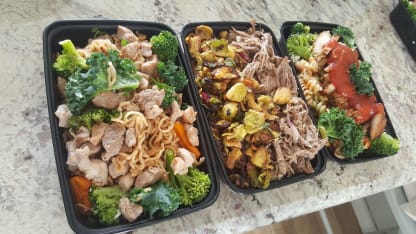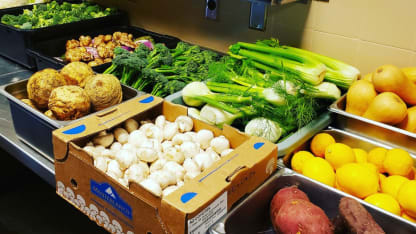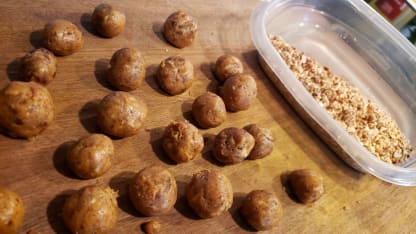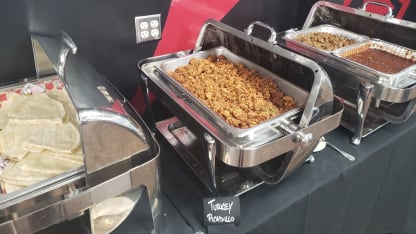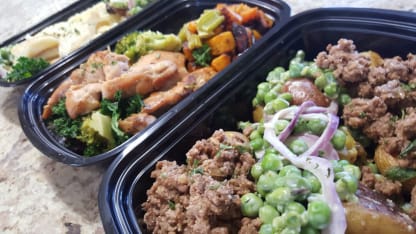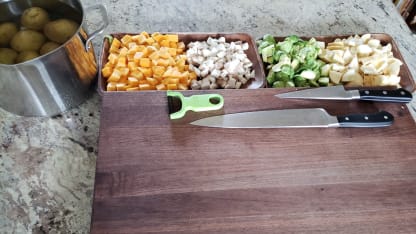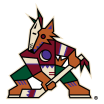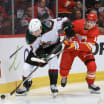Then there's the all-important postgame dine, which Maura describes as "a king's meal."
"It'll be something that you would get at a steakhouse," he said. "Whether it be a good steak, good pieces of fish, all that stuff, ready to go with sauces. We do barbecue, we go through Latin cuisines, we go through Greek cuisines, we just try to give them a lot of variety, the same sort of thing they would do if they were eating out after the game."
Maura generally isn't able to watch the on-ice action. From game start to finish, he is working feverishly to construct the post-game spread, which usually is ready with 10 or 15 minutes remaining in the third period.
Scratched players, staff, and referees usually are the first to get a taste of the post-game buffet.
"The thing about postgame is, the guys that are coming off the ice, the last thing they want to do is eat right away," Maura said. "They'll go through their treatment process -- the medical staff takes good care of them, making sure to cool them down, giving them treatment, giving them massages. And then, after that, when they're in a more relaxed state, they'll shower up and they'll eat."
Maura will fire up the grill, again, depending on the players' postgame timeline, ready to sear more fish, more steak, or more chicken.
The outcome of a game, too, can affect consumption.
"It could be a beautiful spread," he said. "But, if it's a game we lost, then maybe the mood's going to be really sour - 'We really needed that win.' The guys aren't going to touch it, because no one's hungry after a loss. That's the difficult thing to deal with as a chef, because you're sourcing as best as you can, you're trying to get the best possible ingredients for these guys to help them recover after a game, and sometimes they're really not hungry. Winners want to eat, losers want to … you know, take the loss and try to grow from it."
For the most part, the post-game menu remains the same.
"A healthier starch option, a second -- maybe more fatty -- starch option, which may be a little more delicious than the first one. So, you have something lean and then something a little bit heavier. You give them a vegetable, you give them a salad, you give them a heavier protein and a lighter protein, steak and fish, or chicken and lamb, something where they can choose."

